10 endangered species in Vietnam
All are marvelous you didnt seen before
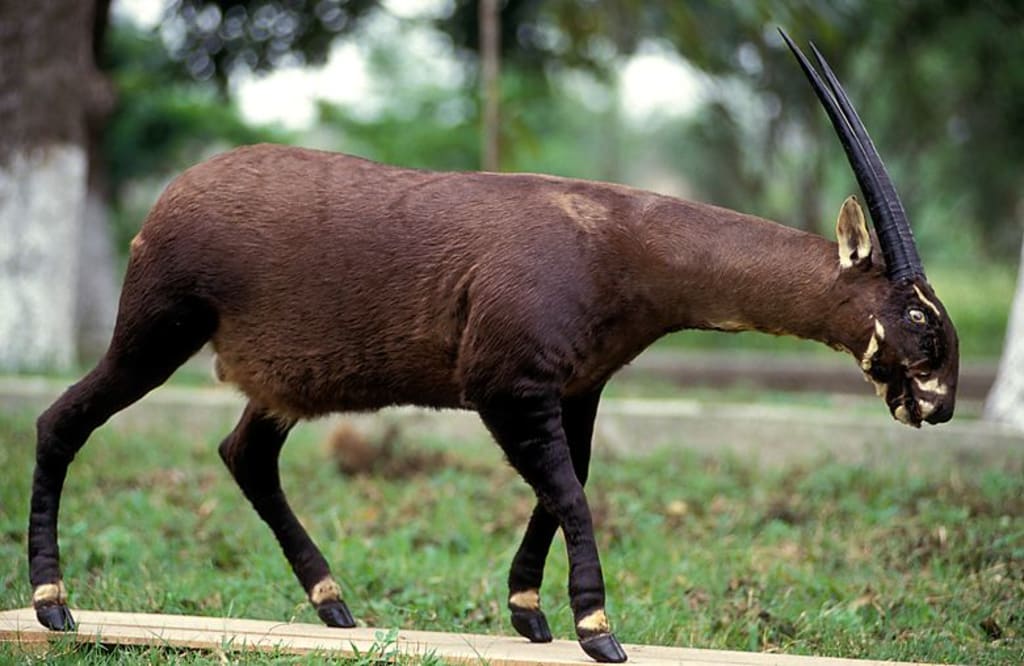
1., Saola (Pseudoryx nghetinhensis):
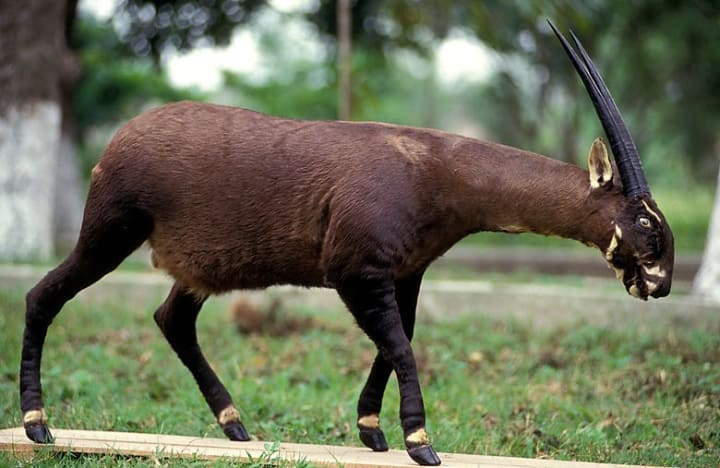
The Saola (Pseudoryx nghetinhensis), also known as the "Asian Unicorn," is a rare and critically endangered mammal species found in the Annamite Range of Vietnam and Laos. It was first discovered in 1992 during an expedition in Vu Quang Nature Reserve in Vietnam. Here are some details about the Saola:
Physical Description: Saolas have a unique appearance, resembling an antelope but with some bovine characteristics. They have a slim body, long legs, and a small head. Their coat is chestnut-brown with a white belly, and they have distinct vertical white markings on their face. The Saola also has long, straight horns, which can reach up to 20 inches (50 cm) in length in males and are shorter in females.
Habitat: Saolas are primarily found in the remote, dense, and mountainous forests of the Annamite Range, spanning the border between Vietnam and Laos. They inhabit areas with a mix of evergreen and deciduous forests, steep slopes, and rugged terrain.
Conservation Status: The Saola is listed as critically endangered on the IUCN Red List of Threatened Species. It is one of the most threatened large mammal species in the world. The total population is unknown but is estimated to be extremely low, possibly ranging in the tens or hundreds. The species faces severe threats primarily from hunting and habitat loss due to deforestation and human encroachment.
Behavior: Saolas are elusive and shy creatures, making them difficult to study. They are primarily active during the early morning and late afternoon. They are herbivores and feed on a variety of vegetation, including leaves, stems, and fruits.
Reproduction: Very little is known about the reproduction and breeding behavior of Saolas in the wild. It is believed that they have a gestation period of around 7 to 8 months, similar to other bovid species. They likely give birth to a single calf.
Conservation Efforts: Due to their critically endangered status, conservation efforts for the Saola are of utmost importance. Conservation organizations, local communities, and governments are working together to protect their habitat, establish protected areas, and raise awareness about the species. Efforts are also underway to combat illegal hunting and trade of Saola parts.
Threats: The Saola faces numerous threats, primarily from hunting for its meat and horns. Its horns are highly valued in traditional medicine and fetch a high price in illegal wildlife trade markets. Habitat loss due to logging, agriculture expansion, and infrastructure development further compounds the threats faced by this species.
The Saola's rarity and mysterious nature make it an emblematic species for conservation in Vietnam and the world. Protecting its habitat and combating poaching are critical for the survival of this unique and enigmatic creature.
2., Javan Rhinoceros (Rhinoceros sondaicus):

The Javan Rhinoceros (Rhinoceros sondaicus) is one of the rarest and most critically endangered large mammals in the world. Here are some comprehensive details about this remarkable species:
Physical Description: The Javan rhinoceros is a large, prehistoric-looking mammal. It is smaller than other rhinoceros species, with adults measuring around 10 feet (3 meters) in length and standing about 5 to 6 feet (1.5 to 1.8 meters) tall at the shoulder. They have a single horn, which can reach lengths of up to 10 inches (25 centimeters). Their skin is gray and heavily folded, giving them a distinctive appearance.
Habitat: Historically, Javan rhinoceroses inhabited the dense rainforests, swamps, and grasslands of Southeast Asia, including Vietnam, Indonesia, and possibly Thailand. Currently, they are only found in U Minh Thượng National Park in Vietnam, specifically in the Cat Tien and Cat Loc sections.
Conservation Status: The Javan rhinoceros is listed as critically endangered on the IUCN Red List. As of the most recent estimates, the total global population is estimated to be fewer than 80 individuals, making it one of the world's rarest mammals. The population in Vietnam is believed to be extremely low, possibly fewer than ten individuals.
Behavior: Javan rhinoceroses are solitary and elusive creatures. They are mostly active during the early morning and late afternoon, and spend the rest of the day resting or wallowing in mud to cool off and protect their skin from insects. They are herbivores, primarily feeding on the leaves, twigs, and fruits of various plant species.
Reproduction: Javan rhinoceroses have a relatively long gestation period of around 16 months. Females give birth to a single calf, which remains dependent on its mother for several years. The inter-birth interval can range from 3 to 5 years, contributing to their slow population growth.
Conservation Efforts: Conservation efforts for the Javan rhinoceros focus on protecting their remaining habitat and preventing poaching. Strict anti-poaching measures, habitat restoration, and monitoring programs have been implemented. Additionally, international collaborations and partnerships with local communities are crucial in preserving this species.
Threats: The Javan rhinoceros faces numerous threats that have contributed to its critically endangered status. The primary threat is poaching for their horns, which are highly valued in traditional Asian medicine and fetch exorbitant prices on the illegal wildlife market. Habitat loss, resulting from deforestation and agriculture expansion, has also significantly reduced their suitable habitat.
The Javan rhinoceros is an iconic species that symbolizes the importance of conservation and habitat protection. Urgent and concerted efforts are necessary to save this majestic creature from the brink of extinction and ensure its survival for future generations.
3., Red-shanked Douc Langur (Pygathrix nemaeus):

The Red-shanked Douc Langur (Pygathrix nemaeus) is a striking and endangered primate species found in Southeast Asia, including Vietnam, Laos, and Cambodia. Here are some comprehensive details about this unique and beautiful langur:
Physical Description: The Red-shanked Douc Langur is known for its vibrant and colorful appearance. Adults have a reddish-brown back, a grayish-white chest and abdomen, and distinctive red or maroon-colored legs. Their faces are adorned with a variety of colors, including blue, gray, and white, with a black outline around the eyes. Males and females are similar in appearance.
Habitat: Red-shanked Douc Langurs are primarily found in the evergreen and semi-evergreen forests of Southeast Asia. They inhabit both lowland and mountainous areas and can be found in various forest types, including primary and secondary forests.
Conservation Status: The Red-shanked Douc Langur is listed as endangered on the IUCN Red List. The species is under threat due to habitat loss, hunting, and illegal wildlife trade. The population has significantly declined over the years, making conservation efforts crucial for their survival.
Behavior: These langurs are primarily arboreal, spending most of their time in trees. They are highly agile and adept at moving through the forest canopy. They live in small to medium-sized groups, typically consisting of one adult male, several adult females, and their offspring. They communicate through vocalizations, body language, and facial expressions.
Diet: Red-shanked Douc Langurs are herbivores, feeding mainly on leaves, flowers, fruits, and young shoots. They have specialized stomach chambers that allow them to digest plant material efficiently.
Reproduction: Female Red-shanked Douc Langurs reach sexual maturity around four years of age, while males become sexually mature at approximately six years. Breeding can occur throughout the year, and the gestation period is around six months. Females typically give birth to a single offspring, which is cared for by the mother and other members of the group.
Conservation Efforts: Conservation efforts for the Red-shanked Douc Langur involve protecting their habitat, raising awareness about their plight, and combating illegal hunting and trade. National parks and protected areas have been established to safeguard their habitats, and community-based conservation initiatives are being implemented to involve local communities in their protection.
Threats: The Red-shanked Douc Langur faces several threats. Habitat loss due to deforestation, primarily driven by logging, agriculture, and infrastructure development, poses a significant threat to their survival. They are also hunted for their meat and for use in traditional medicine, which contributes to their declining population.
Efforts to protect and conserve the Red-shanked Douc Langur are essential to ensure the survival of this beautiful and endangered primate species. Conservation initiatives, along with sustainable management of their habitat and effective law enforcement, are crucial for their long-term survival.
4., Delacour's Langur (Trachypithecus delacouri):
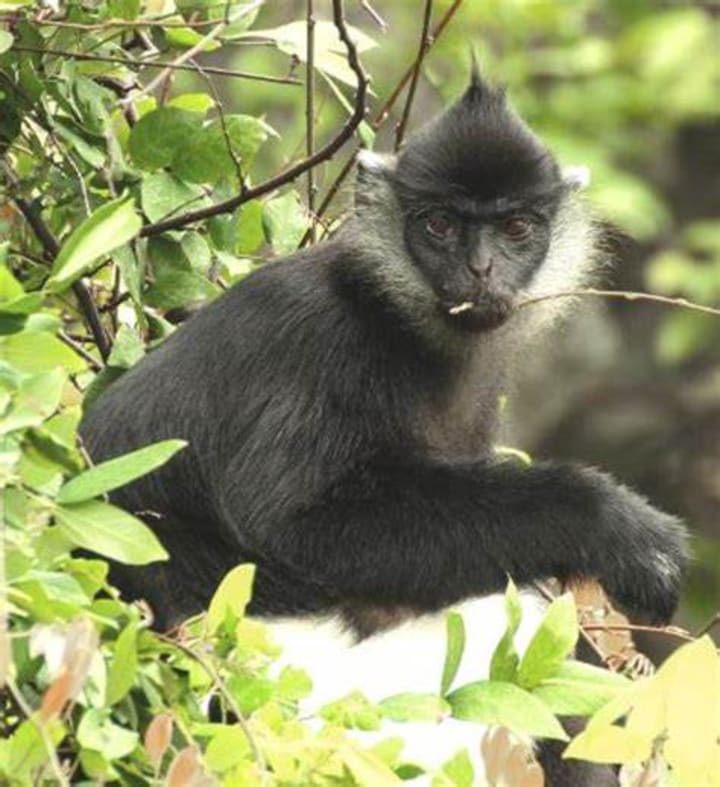
Delacour's Langur (Trachypithecus delacouri), also known as the Delacour's Leaf Monkey, is a critically endangered primate species endemic to northern Vietnam. Here are comprehensive details about this remarkable langur:
Physical Description: Delacour's Langur is a medium-sized monkey with distinctive black and white coloration. The face and hands are black, while the rest of the body is covered in long, white fur. The tail is long and slender, often longer than the body itself. Infants have a striking orange coat, which gradually changes to the adult coloration as they grow.
Habitat: Delacour's Langur inhabits the limestone karst forests and surrounding areas in northern Vietnam, including regions such as Ninh Binh, Hoa Binh, and Thanh Hoa provinces. They are highly adapted to living in limestone areas, where they can leap and climb among the cliffs and rocky outcrops.
Conservation Status: Delacour's Langur is listed as critically endangered on the IUCN Red List. The population is estimated to be less than 250 individuals, with ongoing declines due to habitat loss and hunting. The species faces significant threats to its survival and requires urgent conservation action.
Behavior: Delacour's Langur is primarily arboreal, spending most of its time in the trees. They are highly agile and skilled climbers, moving swiftly through the forest canopy. They are diurnal and live in small social groups consisting of one adult male, multiple females, and their offspring. They communicate through vocalizations, body postures, and facial expressions.
Diet: Delacour's Langur is primarily folivorous, with a diet consisting mainly of leaves, flowers, and young shoots. They have a specialized digestive system that allows them to process the fibrous plant material efficiently.
Reproduction: Breeding in Delacour's Langur can occur throughout the year, with a peak during the dry season. Females give birth to a single offspring after a gestation period of around 6 months. The infants cling to their mothers and are dependent on them for several months.
Conservation Efforts: Conservation efforts for Delacour's Langur involve habitat protection, community engagement, and anti-poaching measures. Establishing protected areas and increasing awareness about the importance of conserving this species are critical steps. Conservation organizations work closely with local communities to promote sustainable practices and reduce hunting pressure.
Threats: Delacour's Langur faces severe threats primarily from habitat loss and fragmentation due to limestone quarrying, deforestation, and agricultural expansion. They are also hunted for their body parts, which are used in traditional medicine and for illegal pet trade.
Efforts to protect and conserve Delacour's Langur are crucial to prevent its extinction. Conservation initiatives should focus on preserving their habitat, reducing hunting pressure, and engaging local communities in conservation practices. By safeguarding this unique primate species, we can help maintain the biodiversity and ecological balance of Vietnam's forests.
5., Siamese Crocodile (Crocodylus siamensis):
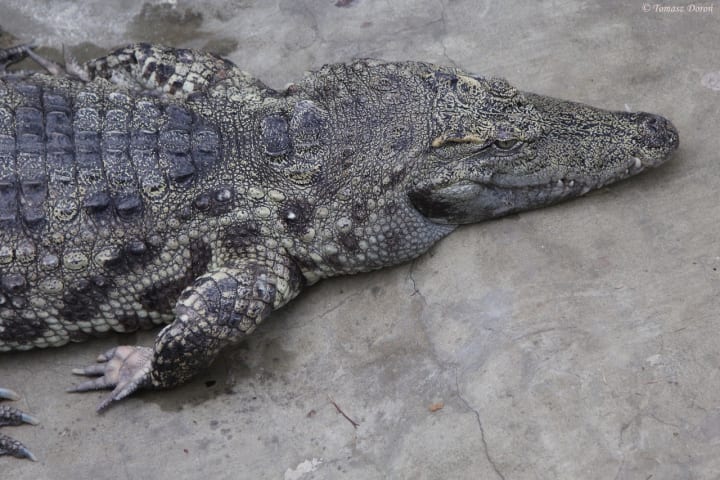
The Siamese Crocodile (Crocodylus siamensis) is a medium-sized freshwater crocodile species native to Southeast Asia. Here are the full details about this fascinating reptile:
Taxonomy and Classification:
The Siamese Crocodile belongs to the Crocodylidae family, which includes all true crocodile species. It falls under the genus Crocodylus, which comprises various crocodile species worldwide. The scientific name "Crocodylus siamensis" refers to its specific epithet, which indicates its connection to Siam, the former name for Thailand.
Appearance and Size:
Siamese Crocodiles have a streamlined body and a relatively broad snout. They have a pale to dark brown coloration, with adults typically having lighter undersides. Juveniles tend to exhibit a brighter, yellowish coloration with distinct dark bands across their bodies, which fade as they mature. This species has a relatively slender and elongated snout compared to other crocodile species.
Adult Siamese Crocodiles can reach an average length of 2 to 3 meters (6.5 to 9.8 feet). However, they have been known to grow up to 4 meters (13 feet) in exceptional cases. Males are generally larger than females.
Distribution and Habitat:
Historically, Siamese Crocodiles had a wide distribution across Southeast Asia. However, due to habitat loss, hunting, and other human activities, their range has significantly decreased. Today, they are primarily found in Cambodia, Laos, Myanmar, Thailand, and Vietnam. They inhabit freshwater habitats such as slow-moving rivers, lakes, marshes, and swamps.
Behavior and Lifestyle:
Siamese Crocodiles are primarily nocturnal, being most active during the night. They are solitary creatures, except during the breeding season when males establish territories and compete for females. Their behavior is generally shy and secretive, often retreating into water or hiding among vegetation when threatened.
As ambush predators, Siamese Crocodiles patiently wait for prey near the water's edge, using their sharp senses to detect vibrations or movements. Their diet mainly consists of fish, frogs, small mammals, birds, and reptiles.
Reproduction:
Siamese Crocodiles are known for their unique breeding behavior. Mating occurs during the dry season when the water levels are low. Males establish territories and attract females through vocalizations and displays, including bellowing and head-slapping. Females lay their eggs in nest mounds constructed from vegetation and soil.
The average clutch size ranges from 20 to 50 eggs. The female guards the nest during the incubation period, which lasts around 75 to 80 days. The sex of the hatchlings is temperature-dependent, with lower temperatures resulting in females and higher temperatures producing males.
Conservation Status:
Siamese Crocodiles are currently listed as Critically Endangered by the International Union for Conservation of Nature (IUCN). They face numerous threats, primarily due to habitat destruction, pollution, and illegal hunting. They are also vulnerable to hybridization with Saltwater Crocodiles (Crocodylus porosus), which reduces their genetic purity.
Conservation efforts, including habitat protection, captive breeding programs, and reintroduction projects, are crucial for the survival of this species. Several organizations and governments in Southeast Asia are actively involved in their conservation.
6., Indochinese Tiger (Panthera tigris corbetti):
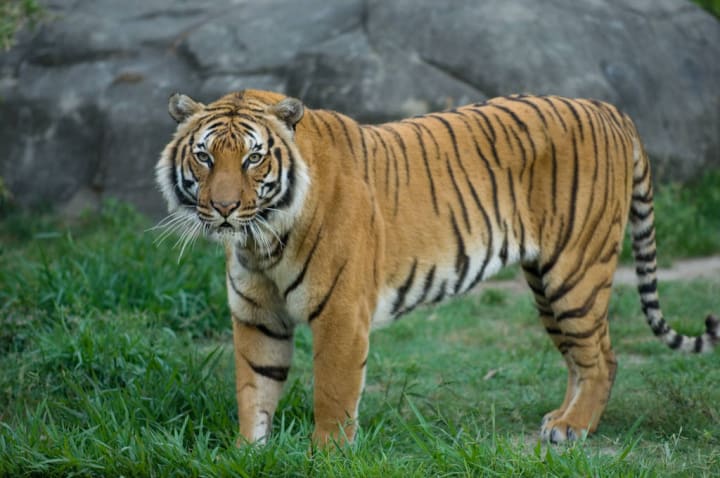
The Indochinese Tiger (Panthera tigris corbetti) is a subspecies of tiger that belongs to the Panthera tigris species. Here are the full details about this majestic big cat:
Taxonomy and Classification:
The Indochinese Tiger falls under the family Felidae and the genus Panthera, which includes other big cat species such as lions, leopards, and jaguars. Its scientific name, Panthera tigris corbetti, is derived from its classification as a subspecies of the tiger (Panthera tigris) and is named after Jim Corbett, a renowned British-Indian hunter and conservationist.
Appearance and Size:
The Indochinese Tiger is one of the smaller subspecies of tigers. It has a robust and muscular build with a long body and tail. Its fur is orange to reddish-brown, with black stripes that are unique to each individual, acting as a form of camouflage. The underside of the Indochinese Tiger is creamy or white, with occasional black stripes.
Adult Indochinese Tigers measure around 2.5 to 3 meters (8 to 10 feet) in length from the head to the tail, with males being slightly larger than females. They weigh between 150 and 200 kilograms (330 to 440 pounds), with males being heavier.
Distribution and Habitat:
The Indochinese Tiger is found in several Southeast Asian countries, including Cambodia, Laos, Myanmar, Thailand, and Vietnam. Historically, its range extended to parts of southern China, but it is believed to be extinct in that region. These tigers inhabit diverse habitats, including tropical forests, grasslands, mangrove swamps, and mountainous regions.
Behavior and Lifestyle:
Indochinese Tigers are predominantly solitary and elusive creatures. They are known for their agility and stealth when hunting. Like other tigers, they are crepuscular, being most active during dawn and dusk. Their keen senses, especially their excellent night vision, enable them to effectively locate and ambush their prey.
The diet of the Indochinese Tiger primarily consists of ungulates such as deer, wild boar, and other medium-sized mammals. Occasionally, they may prey on smaller animals like monkeys and birds. These tigers require a large territory to meet their needs for food, water, and shelter.
Reproduction:
The mating season for Indochinese Tigers can occur throughout the year, although there is a peak period during the cooler months. Females attract males through scent marking and vocalizations. Once a pair has mated, the male usually has no role in raising the cubs.
After a gestation period of about 100 to 110 days, the female gives birth to a litter of 2 to 4 cubs, although larger litters have been observed. The cubs are born blind and helpless, relying on their mother for nourishment and protection. They start to venture out of the den after a few months and are weaned at around 5 to 6 months. The mother teaches them essential hunting skills, and they become independent between 18 to 24 months.
Conservation Status:
The Indochinese Tiger is listed as Endangered by the International Union for Conservation of Nature (IUCN). Like other tiger subspecies, it faces significant threats that have led to its declining population. Habitat loss due to deforestation, fragmentation, and poaching for the illegal wildlife trade are the primary reasons for their endangered status.
Conservation efforts involve protected areas, anti-poaching measures, community engagement, and international collaborations to combat the illegal wildlife trade. Several organizations and governments are working tirelessly to protect the remaining Indochinese Tiger populations and their habitats.
7., Asian Elephant (Elephas maximus):
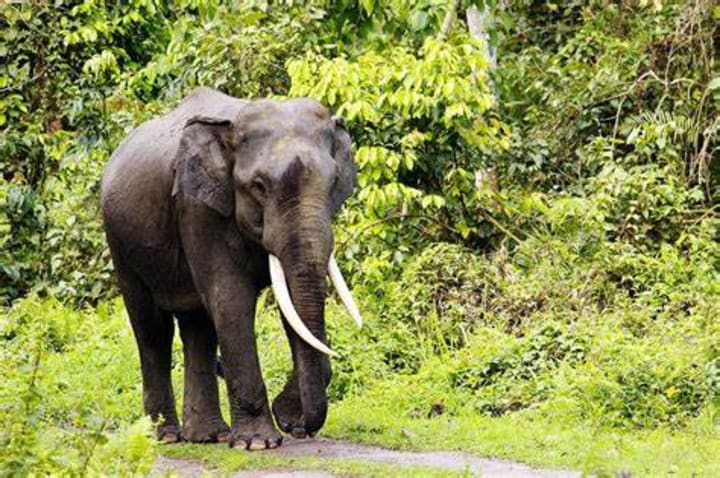
The Asian Elephant (Elephas maximus) is a magnificent mammal and one of the largest land animals on Earth. Here are the full details about this iconic species:
Taxonomy and Classification:
The Asian Elephant belongs to the family Elephantidae and the genus Elephas. It is classified under the species Elephas maximus. There are three recognized subspecies: the Indian Elephant (Elephas maximus indicus), the Sri Lankan Elephant (Elephas maximus maximus), and the Sumatran Elephant (Elephas maximus sumatranus).
Appearance and Size:
Asian Elephants are characterized by their large, stocky bodies and distinctive, elongated trunks. They have grayish to brownish skin, which is sparsely covered in coarse hair. Their ears are relatively small compared to their African counterparts. Asian Elephants possess two prominent tusks, which are elongated incisor teeth that protrude from the upper jaw.
On average, adult males measure around 2.7 to 3.2 meters (9 to 10.5 feet) in height at the shoulder and weigh between 4,500 and 5,500 kilograms (9,900 to 12,100 pounds). Females are slightly smaller, typically reaching heights of 2.3 to 2.7 meters (7.5 to 9 feet) and weighing between 2,700 and 3,500 kilograms (5,950 to 7,700 pounds).
Distribution and Habitat:
Historically, Asian Elephants had an extensive range across various Asian countries. Today, they are found in fragmented populations in 13 countries, primarily in India, Sri Lanka, Nepal, Bhutan, Bangladesh, Myanmar, Thailand, Cambodia, Laos, Vietnam, Malaysia, Indonesia (Sumatra), and Borneo. They inhabit a variety of ecosystems, including forests, grasslands, and wetlands.
Behavior and Lifestyle:
Asian Elephants are highly social animals that live in complex family groups known as herds. These herds are usually led by a matriarch, an older female who guides the group. Males tend to be more solitary and join the herds temporarily during the breeding season or when seeking companionship.
They are herbivorous, feeding on a diverse diet of grasses, leaves, bark, fruits, and crops. Asian Elephants require large quantities of food and water, often traveling long distances in search of resources.
Reproduction:
The breeding season for Asian Elephants can vary across their range. Females come into estrus for a short period, attracting males through vocalizations and scent marking. After a gestation period of approximately 22 months, the female gives birth to a single calf, occasionally twins. Calves are born weighing around 100 kilograms (220 pounds) and are dependent on their mother's care for several years.
Conservation Status:
The Asian Elephant is listed as Endangered by the International Union for Conservation of Nature (IUCN). The main threats to their survival include habitat loss due to deforestation, fragmentation, and human encroachment. Human-elephant conflict, poaching for ivory and body parts, and capture for captivity are also significant challenges.
Conservation efforts focus on protecting elephant habitats, implementing anti-poaching measures, promoting community-based conservation, and mitigating human-elephant conflict. Various organizations, governments, and local communities are working together to safeguard the future of Asian Elephants and ensure their coexistence with human populations.
8., Hawksbill Turtle (Eretmochelys imbricata):

The Hawksbill Turtle (Eretmochelys imbricata) is a critically endangered sea turtle species known for its beautiful shell and unique characteristics. Here are the full details about this remarkable marine reptile:
Taxonomy and Classification:
The Hawksbill Turtle belongs to the family Cheloniidae, which includes all sea turtle species. Its scientific name is Eretmochelys imbricata. The name "Hawksbill" refers to its distinctive hooked beak resembling that of a hawk.
Appearance and Size:
Hawksbill Turtles have a medium-sized body and a narrow, pointed beak. They possess a unique shell known as a carapace, which is characterized by overlapping scales or scutes that give it a serrated or saw-like appearance. The color of their shell varies from dark brown to amber, often exhibiting striking patterns of mottled or marbled colors.
Adult Hawksbill Turtles typically reach a length of around 70 to 90 centimeters (27 to 35 inches) and weigh between 45 and 90 kilograms (100 to 200 pounds). Females are generally larger than males.
Distribution and Habitat:
Hawksbill Turtles have a worldwide distribution, primarily found in tropical and subtropical regions of the Atlantic, Pacific, and Indian Oceans. They inhabit coral reefs, rocky coastlines, lagoons, and shallow coastal waters. Hawksbill Turtles are known to migrate long distances between their feeding and nesting grounds.
Behavior and Lifestyle:
Hawksbill Turtles are primarily solitary creatures, except during mating and nesting seasons. They are primarily herbivorous, with a diet consisting mainly of sponges. However, they also feed on other invertebrates such as jellyfish, sea anemones, and algae.
These turtles are well adapted to their marine environment and are known for their agility and maneuverability in water. They are capable swimmers and can dive to depths of up to 100 meters (330 feet) to find food.
Reproduction:
Hawksbill Turtles reach sexual maturity between 20 and 30 years of age. The mating season varies depending on the region, with nesting usually occurring every 2 to 3 years. Females return to the beaches where they hatched to lay their eggs. They dig nests in the sand using their flippers and lay clutches of around 100 to 150 eggs.
The incubation period typically lasts between 60 and 70 days. Once hatched, the tiny hatchlings make their way to the sea, guided by the natural light of the horizon. The sex of the hatchlings is determined by the incubation temperature, with warmer temperatures producing females and cooler temperatures producing males.
Conservation Status:
The Hawksbill Turtle is critically endangered according to the International Union for Conservation of Nature (IUCN). They face numerous threats, primarily due to habitat degradation, pollution, accidental capture in fishing gear, and illegal wildlife trade for their shells and products made from their shells.
Conservation efforts focus on protecting nesting beaches, implementing measures to reduce bycatch in fishing activities, promoting sustainable tourism, and raising awareness about the importance of conserving sea turtles. Many countries and organizations work together to save the Hawksbill Turtle and ensure its long-term survival.
9., Chinese Pangolin (Manis pentadactyla):
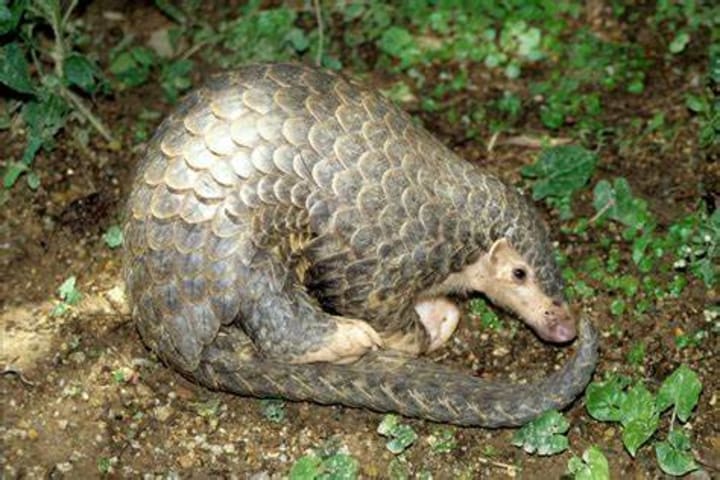
The Chinese Pangolin (Manis pentadactyla) is a unique and critically endangered mammal known for its distinctive scales and fascinating adaptations. Here are the full details about this remarkable creature:
Taxonomy and Classification:
The Chinese Pangolin belongs to the family Manidae, which includes all pangolin species. Its scientific name is Manis pentadactyla. The name "pentadactyla" refers to its five digits on each limb, which are equipped with long, curved claws.
Appearance and Size:
Chinese Pangolins have a compact body covered in large, overlapping scales made of keratin—the same material found in human fingernails. The scales give them a unique appearance and act as a form of armor to protect against predators. Their scales are brownish or yellowish-brown in color.
On average, Chinese Pangolins measure about 40 to 70 centimeters (16 to 28 inches) in length, excluding the tail. They have a prehensile tail, which means they can grasp and hold objects. Adults weigh around 2 to 7 kilograms (4.4 to 15.4 pounds), with females being slightly larger than males.
Distribution and Habitat:
Chinese Pangolins are native to several Asian countries, including China, Taiwan, northern India, Nepal, Myanmar, Bhutan, Bangladesh, and parts of Southeast Asia. They inhabit a variety of habitats, including forests, grasslands, and agricultural areas.
Behavior and Lifestyle:
Chinese Pangolins are primarily nocturnal, meaning they are most active during the night. They are solitary creatures and spend the majority of their time on the ground, although they are also capable climbers and can scale trees with their strong claws. When threatened, they curl up into a tight ball, tucking their head under their tail, and rely on their scales for protection.
Their diet consists mainly of ants and termites, which they locate using their keen sense of smell. Chinese Pangolins have a long, sticky tongue that can extend up to 40 centimeters (16 inches) to extract prey from nests and tunnels.
Reproduction:
The breeding season for Chinese Pangolins occurs between May and June. After a gestation period of about 120 to 150 days, females give birth to a single offspring, known as a pup. The pup is born relatively undeveloped, with closed eyes and soft scales. The mother cares for the pup, carrying it on her back and providing milk until it is independent enough to fend for itself.
Conservation Status:
The Chinese Pangolin is critically endangered according to the International Union for Conservation of Nature (IUCN). It is one of the most trafficked mammals in the world, primarily driven by the demand for its scales in traditional medicine and its meat as a delicacy. Habitat loss and fragmentation also pose significant threats to their survival.
Conservation efforts involve raising awareness about the plight of pangolins, strengthening anti-poaching and anti-trafficking measures, establishing protected areas, and promoting sustainable practices. Many organizations and governments are working together to save the Chinese Pangolin and protect it from extinction.
10., Vietnamese Pond Turtle (Mauremys annamensis):
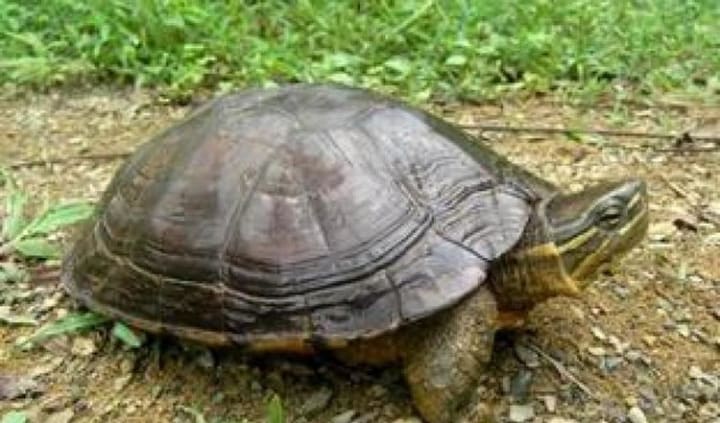
The Vietnamese Pond Turtle (Mauremys annamensis), also known as the Annam Leaf Turtle, is a critically endangered freshwater turtle species endemic to Vietnam. Here are the full details about this unique turtle:
Taxonomy and Classification:
The Vietnamese Pond Turtle belongs to the family Geoemydidae, which includes various species of pond turtles. Its scientific name is Mauremys annamensis, and it is named after its native region of Annam in Vietnam.
Appearance and Size:
The Vietnamese Pond Turtle has a relatively small and elongated body. Its carapace, or upper shell, is typically dark brown or black and features a pattern of lighter concentric rings. The plastron, or lower shell, is yellowish to orange, and the head, limbs, and tail are predominantly dark with yellow or orange markings.
Adult Vietnamese Pond Turtles generally measure between 15 and 20 centimeters (6 to 8 inches) in length, with females being larger than males. They have webbed feet adapted for swimming.
Distribution and Habitat:
This species is endemic to Vietnam and is found in the central and southern parts of the country. It inhabits freshwater habitats, including ponds, lakes, rivers, and marshes. The Vietnamese Pond Turtle prefers slow-moving water with vegetation and ample basking spots.
Behavior and Lifestyle:
Vietnamese Pond Turtles are diurnal, meaning they are most active during the daytime. They are primarily aquatic but also spend time basking on logs or rocks to regulate their body temperature. They are known to be relatively shy and elusive.
Their diet consists of a variety of aquatic plants, insects, crustaceans, mollusks, and small fish. They forage on the bottom of the water body or swim to catch prey.
Reproduction:
Breeding in Vietnamese Pond Turtles usually occurs during the wet season. Females dig nests in sandy or gravelly areas near the water, where they lay clutches of 3 to 7 eggs. Incubation typically lasts around 60 to 70 days. Hatchlings emerge from the nests and make their way to the water, where they begin their aquatic life.
Conservation Status:
The Vietnamese Pond Turtle is critically endangered according to the International Union for Conservation of Nature (IUCN). It is threatened by habitat loss, pollution, collection for the pet trade, and overharvesting for traditional medicine.
Conservation efforts focus on protecting the remaining populations, raising awareness about the species' plight, implementing sustainable management practices, and establishing captive breeding programs. It is essential to safeguard the habitats and ensure the survival of the Vietnamese Pond Turtle to maintain the ecological balance of freshwater ecosystems in Vietnam.
About the Creator
Enjoyed the story? Support the Creator.
Subscribe for free to receive all their stories in your feed. You could also pledge your support or give them a one-off tip, letting them know you appreciate their work.


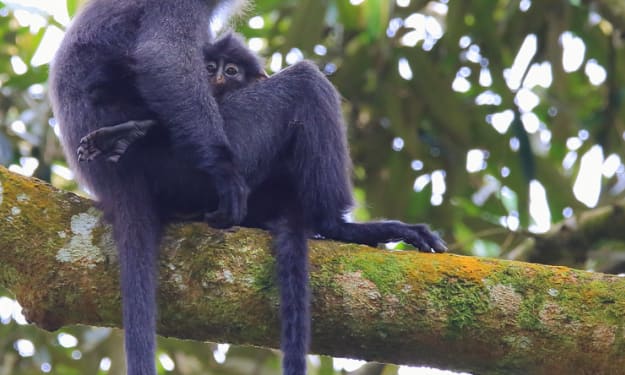



Comments
There are no comments for this story
Be the first to respond and start the conversation.